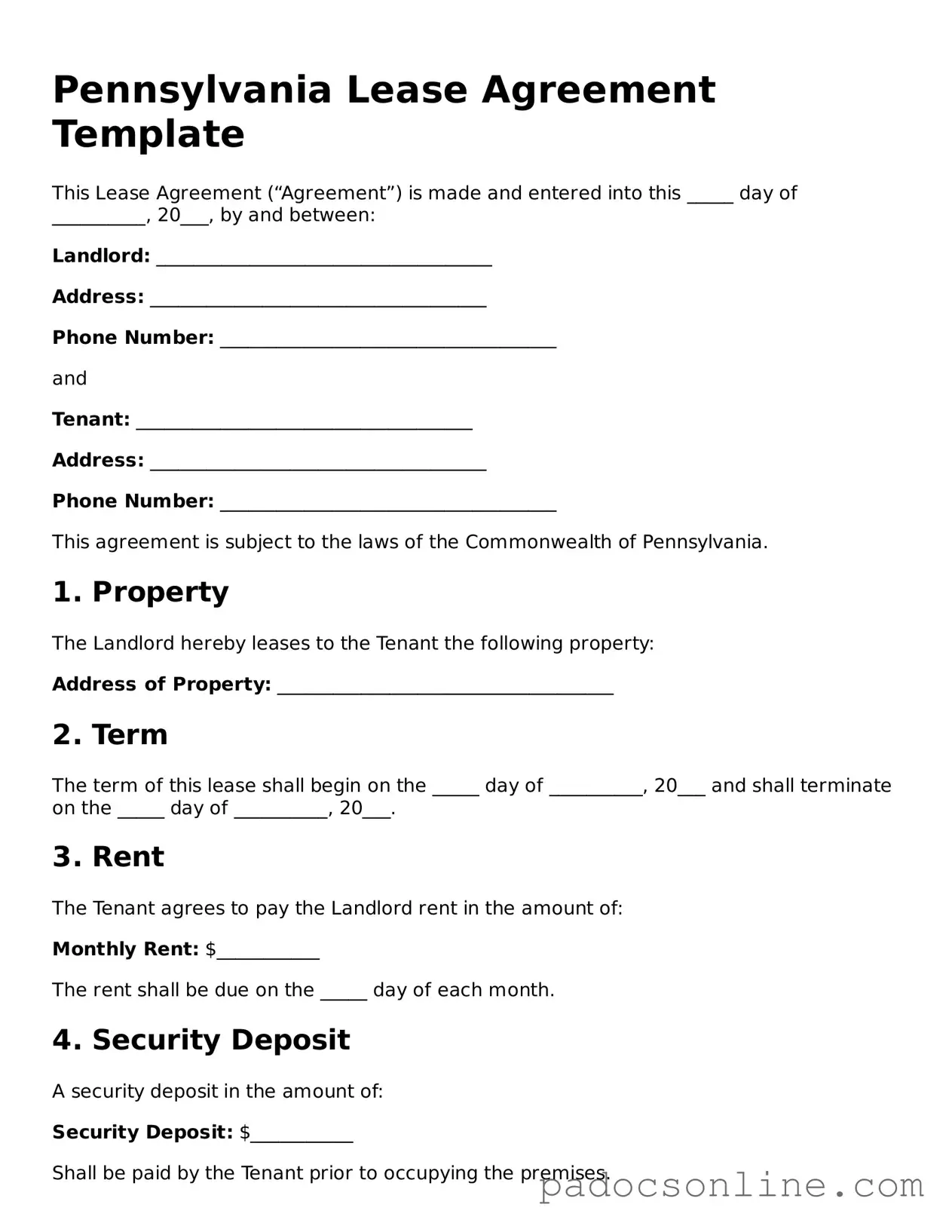Filling out a Pennsylvania Lease Agreement form can be a straightforward process, but many individuals make common mistakes that can lead to complications later on. One prevalent error is failing to include all necessary parties in the agreement. Landlords and tenants must ensure that all individuals who will be living in the rental unit are listed. Omitting a tenant can create disputes regarding rights and responsibilities.
Another frequent mistake is neglecting to specify the rental term. A lease should clearly state whether it is for a fixed term, such as one year, or if it is a month-to-month arrangement. Without this information, both parties may have different expectations about the duration of the tenancy, potentially leading to misunderstandings.
Many people also overlook the importance of detailing the rental amount and payment terms. It is essential to specify not only the monthly rent but also when it is due and acceptable payment methods. Ambiguities in this section can result in late payments or disputes over what constitutes a timely payment.
Security deposits are another area where mistakes often occur. The lease should clearly outline the amount of the security deposit, the conditions under which it may be withheld, and the timeframe for its return after the lease ends. Failing to address these points can lead to legal issues regarding the return of the deposit.
Additionally, individuals sometimes forget to include clauses regarding maintenance and repairs. It is crucial to clarify who is responsible for maintaining the property and how repairs will be handled. A lack of clarity can lead to disagreements over responsibilities and expectations.
Another common error involves not addressing the rules regarding pets. If a landlord has specific pet policies, these should be explicitly stated in the lease. Without clear guidelines, tenants may assume they can have pets, leading to potential conflicts.
People also often neglect to include provisions for terminating the lease. This section should outline the notice period required for either party to terminate the agreement. Ambiguity in this area can lead to disputes if one party wishes to end the lease early.
Moreover, failing to review local laws can be a significant oversight. Pennsylvania has specific regulations governing lease agreements, and landlords must ensure that their leases comply with these laws. Not adhering to legal requirements can result in unenforceable clauses.
Lastly, many individuals do not take the time to read the lease thoroughly before signing. This oversight can lead to agreeing to terms that are unfavorable or misunderstood. Both landlords and tenants should ensure they fully understand the lease's content and implications before committing.
